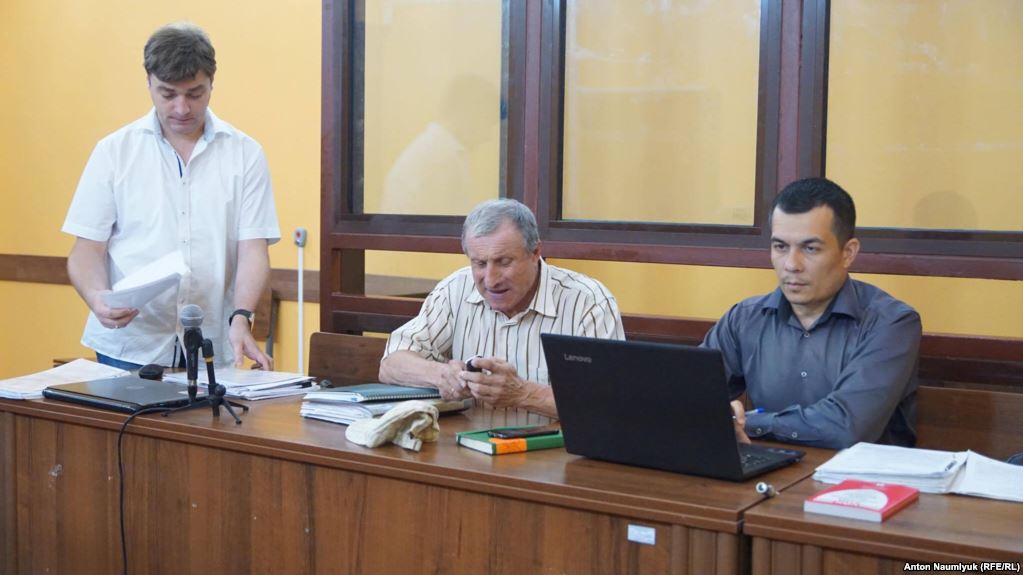The German concern Siemens has filed a lawsuit against two subsidiaries of the Russian industrial monopolist Rostec for transporting two gas turbines for electricity production from Russia to occupied Crimea, demanding it return the turbines to their original destination, Taman. EU sanctions prohibit providing energy equipment to the peninsula which Russia occupied in 2014. Siemens is claiming that the transfer of turbines to Crimea happened against its will, that it had been misled by its Russian partners, did not intend to break sanctions, and is therefore a victim of Russian treachery. But how credible is the claim? This report investigates the open source evidence. Apart from providing the facts, we also offer our interpretation of the events in the boxes starting with “EP:”. You can also watch a video about this investigation.
Summary
The international scandal which started when Siemens gas turbines were spotted in occupied Crimea on 29 June 2017 is gaining intensity. The equipment is planned to be the heart of the two electricity stations now under frantic construction to give the energy-dependent peninsula a stable power supply. It is also prohibited under EU sanctions, which ban companies from participating in energy projects in the peninsula which Russia took over in its 2014 landgrab.
In the best traditions of crisis management, Siemens announced it is taking “decisive steps” to regulate the situation. As well, Siemens has insisted it is a victim of the treachery of its Russian partner, which according to Siemens moved the turbines from the nearby Taman peninsula to Crimea against its will, has even taken the case to court, and is reportedly calling to widen the EU sanctions blacklist in connection with the scandal. However, the open source evidence shows that Siemens’ victimhood is possible only if the company has done away with critical thinking and analysis of the local market. Even if the company’s management was (which is highly unlikely) unaware that they were helping to power Russia’s Anschluss, it is undeniable that Siemens, while wading in murky waters, did not develop a realistic mechanism to prevent the crime. As a preface, we must point out the incredible naïveté of Siemens in assuming that Russia, after occupying its neighbor’s land, will willfully abide by the sanctions the international community slapped on it in response. No less naive is believing that the state-owned monopoly Rostec, the leader of which is under EU sanctions for intending to build power stations in Crimea, is to be trusted in promises not to use the Siemens turbines for this end. The premise on which Siemens agreed to do business with Rostec was shaky in itself: it all started from a secret contract which bypassed the tender system required for all state companies, for a station that the Russian government never planned to build prior to the annexation of Crimea, making it highly probable that the company took the decision to deliberately violate sanctions from the very beginning. But even if, after the abovementioned, we assume Siemens was acting out of naive goodwill, many things don’t add up. First, there was the miraculous multiplication of Rostec subsidiaries. In the beginning, there was the OAO Technopromexport which announced it was building two stations in Crimea with a total capacity of 940 MW, but then purchased four gas turbines for precisely the same 940 MW capacity for a station in Taman which they were not building, and the only certain thing about which was the government’s plan for its 660 MW capacity (later decreased to 450 MW, screaming out the question how 940 MW turbines will be used in it if it ever gets built). Then there appeared the cloned OOO Technopromexport, which without any announcement took over the Crimea 940 MW construction and got busy with hundreds of tenders for this purpose, but ordered the core energy-generating equipment, steam turbines, for - you guessed it - a 940 MW unit to be used in Taman. The Crimean power stations themselves, at the proposal of the Russian government, were planned specifically for four 235 MW turbines which Russia couldn’t get anywhere except for Siemens. Then, there were the OOO and OAO Technopromexport-s’ steps, insane from the business viewpoint: spending hundreds of millions of euros of what appears to be internal funds to purchase equipment which was unlikely to ever pay off, but which was quite likely to be incompatible with the projected Taman station, from what was known from the vague state plans to have one at all. But the equipment was a perfect fit for the Crimean power stations being constructed with mostly federal funds. And then not a single company submitted a proposal for the Taman power station contest. Then, OOO Technopromexport’s contractor, the Russian Research Institute of Automatics, part of Rosatom, announced in their yearly report that they will deliver automated control systems for the 940 MW turbines in Crimean power plants, not the imaginary stations (now there were two of them) in Taman like it was written in the tender they won. And the OAO Technopromexport’s sudden bankruptcy, which could only happen if its mother Rostec decided to let it sink. Afterwards, OAO Technopromexport tried to auction off the turbines at a price twice higher than they are worth because they didn’t have enough money to participate in the Taman contest - an ironic move, since it had sold them to its clone OOO Technopromexport half a year back. But after that, the turbines were delivered to Taman anyway, and in November 2016 OAO Technopromexport called the police to demand Siemens deliver the magic sauce making the turbines operational. By this time that Siemens changed its tactics of complacency and as of March 2017 had still not delivered the magic sauce making the turbines operational, but still assured the press that they “have no reason to believe” the turbines would be used in Crimea. This didn’t stop the turbines from traveling to the prohibited land across the 10 km of water that separate Taman from it, despite Siemens’ cries that their contract with the Russian monopoly’s daughter prohibits this. Apparently, the only preventive mechanism Siemens envisioned was the contract itself and the reliance on the goodwill of its sanctioned partner. This was obviously not enough. It is hard to imagine how all of the above could have taken place without Siemens’ knowledge. Now, thanks to either its negligence or active cooperation, the German turbines are in Crimea. They are more than likely to be “hacked” and switched on even without German assistance, helping Vladimir Putin to secure his occupation of Ukrainian land, and continue with the repressions, intimidation, kidnappings, and torture of anybody who doesn’t agree with his policies.The investigation in a nutshell: Siemens’ Crimea sanctions break – a case of criminal negligence | #SiemensGate
The latest events
- 6 July: Siemens denied its turbines are in Crimea, saying they have “no reason to believe that the gas turbines mentioned in the news articles are destined for Crimea.” Russia's technology giant Rostec said it bought the turbines on the secondary market and that they are not turbines by Siemens.
- 7 July: Siemens set up a taskforce to investigate the matter
- 8 July: Reuters published information that the firm hired into install turbines in Crimea, ZAO Interautomatika, is partly owned by Siemens.
- 8 July: the remaining two Siemens turbines are delivered to Crimea through the port of Feodosiya. They are delivered with the same ship company as previous two. Media reports about the incident appear on 13 July.
- 10 July: Siemens acknowledged that at least 2 from 4 turbines it delivered to Russia "were moved to Crimea against its will"
- 11 July: Siemens sues 2 daughters of the Russian technology giant Rostec for moving two turbines to Crimea in Moscow Arbitration Court, rethinks "some Russian business"
- 12 July: German government tells Siemens to explain how its turbines ended up in Crimea
- 12 July: Forbes published the details of Siemens’ lawsuit against OAO and OOO Technopromexport, in which Siemens states the details of a contract between these 2 subsidiaries of Rostec, one of which sent the turbines to Crimea. Siemens wrote that if it knew that if it knew that the turbines would to to Crimea, it “obviously, would not conclude such a deal.”
- 12 July: OOO Technopromexport, the company building the stations, is to become an energy company, sell electricity generated by the stations, and use it to pay back the loan it received from the RNKB bank for constructing the stations, Kommersant reported.
- 12 July: the European Commission had commented on the Siemens case that "implementation and enforcement of EU restrictive measures rests with the member states" and that "the Commission is in touch with the German competent authorities on this particular case," Reuters reported.
- 13 July: Russia detained Roman Fillipov, CEO of turbine maker Power Machines, on suspicion of attempted divulgence of state secrets.
- 14 July: Siemens thinking about leaving ZAO Interautomatika, its joint venture in Russia which had previously been reported to be involved in installing the turbines in Crimea
- 15 July: Moscow Arbitration Court leaves Siemens’ lawsuit without motion until 21 August, citing incomplete documentation: the submitted claim did not have a letter of Power of attorney
- 15 July: Russian Energy Minister Aleksandr Novak says Siemens had not addressed the Ministry regarding leaving business projects in Russia
- 20 July: Roman Fillipov left his post in a “mutual agreement” with the firm
- 20 July: German newspaper WirtschaftsWoche publishes an article based on its sources that at the end of September 2016, a meeting between Russian President Vladimir Putin, his speaker, German Foreign Minister Sigmar Gabriel, and the German ambassador to Moscow Rudiger von Fritsch, where Putin promised the German side that the Siemens turbines would not end up in Crimea.
- 21 July: in an official statement, Siemens confirms all 4 turbines are in Crimea, having been “locally modified and illegally moved to Crimea against clear contractual agreements,” and announces it is withdrawing from Interautomatika, is going to terminate its licensing agreement with Russian companies on the installation of combined cycle power stations, is halting delivery of power generation equipment from existing contracts to state-controlled customers, and will develop another controls mechanism which includes installing equipment only by Siemens personnel.
- 24 July: Reuters reported, citing sources in Brussels, that Germany is urging the EU to add up to four additional Russian nationals in its sanctions blacklist in connection with the turbines scandal.
- 27 July: EU gives initial OK to blacklist several more Russian nationals over turbines imbroglio, Reuters reported.28 July: OAO Technopromexport admits that the turbines in Crimea came from Siemens, claims Siemens was offered to buy them back in 2016 but refused.
Background
The power stations being built in Sevastopol and Simferopol were planned to meet Crimea’s energy deficit. The peninsula received 80% of its required energy supply from mainland Ukraine. After Russia occupied Crimea in 2014, Ukraine cut off the power supply, after which the peninsula experienced permanent blackouts. As an emergency measure, Russia brought in mobile diesel generators left over from the Olympiad in Sochi and laid an underwater power cable across the Kerch strait to deliver electricity from the proximate Krasnodar Krai (which was itself a region with an energy deficit). However, the power cable could get damaged, and the diesel generators were not intended for permanent use. An unstable power supply will decrease the support of the occupied peninsula for the Russian government. Therefore, finding a solution to meet Crimea’s energy needs (1.43 GW at peak consumption, and 1.1 GW at average consumption) became top priority. However, to build new stations, Russia must have their technological core - the gas turbines, which, when taken together with steam turbines (this combination is called the combined cycle gas turbine), gives a cost-effective and efficient method to produce electricity from gas.
 The cost of building the new power stations was estimated at RUB 71 bn (€1.4 bn, as of 24.04.2014), of which RUB 25 bn (€405 mn, as of 3.04.2015) was to come from the state budget. The remaining RUB 46bn were to be financed from bank loans. These loans were apparently found only on 20 October 2016, when Crimea’s largest bank RNKB provided a RUB 23.7 bn loan; at that time, insiders said that the government was funding more than 65% of the cost of the stations.
A combined cycle gas turbine (CCGT) consists of two parts: the gas turbine itself, which has a higher efficiency for producing electricity from a given quantity of gas, and which Russia does not manufacture above the capacity of 32 MW, and the steam turbine with a low efficiency of 30%, which it does manufacture, and shipped to Crimea to work in conjunction with the Siemens turbine.
Russia does not manufacture large-capacity gas turbines because most of its stations were built in the 1960s-1980s, when gas and coal were abundant and there was no urgent need for increasing the efficiency of the turbines. In Europe, the situation was different, and the more efficient gas turbine technologies were developed, as well as the CCGT. Nowadays, Russia is 100% dependent on the import of high-capacity gas turbines, and most were built by Siemens.
The CCGT unites the steam turbines and gas turbines into one technological cycle, increasing the overall efficiency to 60%. This video gives a good overview of how the CCGT works:
The scandal which broke out is around the Siemens SGT5-2000E gas turbine.
The cost of building the new power stations was estimated at RUB 71 bn (€1.4 bn, as of 24.04.2014), of which RUB 25 bn (€405 mn, as of 3.04.2015) was to come from the state budget. The remaining RUB 46bn were to be financed from bank loans. These loans were apparently found only on 20 October 2016, when Crimea’s largest bank RNKB provided a RUB 23.7 bn loan; at that time, insiders said that the government was funding more than 65% of the cost of the stations.
A combined cycle gas turbine (CCGT) consists of two parts: the gas turbine itself, which has a higher efficiency for producing electricity from a given quantity of gas, and which Russia does not manufacture above the capacity of 32 MW, and the steam turbine with a low efficiency of 30%, which it does manufacture, and shipped to Crimea to work in conjunction with the Siemens turbine.
Russia does not manufacture large-capacity gas turbines because most of its stations were built in the 1960s-1980s, when gas and coal were abundant and there was no urgent need for increasing the efficiency of the turbines. In Europe, the situation was different, and the more efficient gas turbine technologies were developed, as well as the CCGT. Nowadays, Russia is 100% dependent on the import of high-capacity gas turbines, and most were built by Siemens.
The CCGT unites the steam turbines and gas turbines into one technological cycle, increasing the overall efficiency to 60%. This video gives a good overview of how the CCGT works:
The scandal which broke out is around the Siemens SGT5-2000E gas turbine.
Players involved
Rostec, a Russian state-controlled corporation created in November 2007 which is regarded as a Russian monopoly in the fields of military and industrial technologies and in dual-use goods. Rostec, within the defense and high tech industries, is similar to Gazprom and Rosneft in the energy sector. Under US sanctions starting from 12 September 2014. OAO "Vneshneekonomicheskoye obyedineniye Technopromexport" (OAO Technopromexport) ("Open joint stock company 'External economic union Technopromexport'") - a subsidiary of Rostec and company which purchased the turbines from Siemens. Was announced as the company that will build power stations in Crimea. Under US sanctions since 12 December 2015. Registered in 2006. Went bankrupt in 2017. 100% of shares belong to Rostec. [Company fact sheet] [List of tenders] [Bankruptcy documents] OOO "Vneshneekonomicheskoye obyedineniye Technopromexport" (OOO Technopromexport) ("Limited liability company 'External economic union Technopromexport'") - a subsidiary of Rostec. Company which purchased turbines from OAO Technopromexport. Registered on 8.05.2014. The relationship between OAO and OOO Technopromexport is unclear. On OAO Technopromexport's official site, OOO Technopromexport is not mentioned. Both OAO and OOO Technopromexport are not mentioned on Rostec's official site. Despite this, they have the same registration address, and the contacts for OOO Technopromexport have emails at the domain tpe.ru, belonging to OAO Technopromexport. 99% of shares belong to RT Energo (100% shares of which are controlled by Rostec), 1% - to OAO Technopromexport. [Company fact sheet] [List of tenders] [List of procurement plans] Power Machines - a St.Petersburg company with which Siemens signed contracts in 2007 and 2008 to transfer German technology and the right to manufacture gas turbines. Today 100% of Power Machines is owned by a Cyprus company Highstat limited, the controlling interest of which is owned by Russian billionaire Alexei Mordashov, a close friend of Putin. Siemens Gas Turbines Technology (SGTT) - a joint company with 65% of shares belonging to Siemens and 35% to Power Machines (via a holding company “Siemens Gas Turbines Technology Holding B.V.” registered in The Hague, Netherlands). Founded in 2011 after a failed attempt by Siemens to take over a controlling stake in Power Machines. Its first plant for the assembly and servicing of gas turbine units was opened on 18 June 2015 near St. Petersburg. Power Machines’ annual report for 2014 stated: “The development of the gas turbine business of Power Machines is conducted in close partnership with Siemens. The Russian-German joint venture is engaged in research and development of new gas turbines, the localization of production in Russia, assembling, sales, project management and maintenance of gas turbines.” The SGTT is the successor of Interturbo. ZAO Interautomatika - a company specializing in electrotechnical processes. 45.72% shares owned by Siemens, 36.94% by OAO VTI, the All-Russian Thermal Engineering Institute, and 17.34% by OAO Technopromexport. Is a participant of a tender submitted by OOO Technopromexport to develop automated control systems of the two power plants in Crimea on 29 January 2016 (tender later canceled). According a Reuters publication on 8 July 2017, it has been hired to help install the turbines in Crimea, after which Siemens announced it was withdrawing from the company. GTE-160 (a gas turbine with the nominal capacity of 160 MW) is a old license name for the SGT5-2000E, which was slightly modified for Russian conditions. Earlier Siemens built these turbines in a joint venture Interturbo with the Leningrad machine-building factory. SGTT sells and services the GTE-160. When the SGT5-2000E is mentioned here and elsewhere, the GTE-160 is meant. These turbines are combined cycle gas turbines (CCGT), meaning that it unites the steam turbines efficiency and gas turbines into one technological cycle. The total capacity of these units is 235 MW. It consists of 160 MW nominal capacity of the gas turbine + 75 MW capacity of steam turbine.
The chronology
11 August 2014 - the Russian government decides (decree #790) to build two gas power plants in occupied Crimea and one - across the Kerch Strait, in Taman, and that the cost of the “objects” in Crimea would be RUB 19.8 bn (€413.9 mn), to be financed from private investors (attachment 4 in the 2014 version of the decree, positions 3.2 and 4). The document does not contain any costs planned for power plants in Taman. (The government order #2004 issued on 8 October 2015 makes it clear that the new power plants in Crimea are to be built in Sevastopol and Simferopol, to have a capacity of 470 MW each, and to be constructed over 2015-2018.) 11 August 2014 - The EU adopted sanctions which prohibit specifically “to sell, supply, transfer or export equipment and technology related to the creation of infrastructure in the sectors of transport, telecommunications and energy as well as regards the exploitation of oil, gas and mineral resources.” 21 August 2014 - Technopromexport (not clear whether OAO or OOO) becomes the first company which "announced its desire to build power plants in Crimea," the specialized energy site tesiaes.ru reported specifying that the two plants would have a total capacity of 700MW and would cost RUB 45bn (€908.4 mn). The site noted that according to unofficial data, many other Russian energy companies were afraid of possible international sanctions and that Technopromexsport announced that it would apply to Russian banks to give loans for the construction and that the state Sberbank and VTB were among the candidates. The same day, Vedomosti, citing its sources, reported that it was Russia's Ministry of Energy that made the proposed to Technopromexport to build the plants. An employee of the company told the outlet that the participation of the state corporation in this project was agreed in a meeting of President Vladimir Putin and Rostec general director Sergei Chemezov on 13 August, and an Energy Ministry official confirmed that such a meeting had been in preparation. Technopromexport will invest in the project itself, a person close to the company told the outlet. An Energy Ministry employee told that the Russian budget didn't have enough money for powering Crimea, which is why the Ministry searched for investors among Russian energy companies, suggesting to move power units under construction to Crimea from regions which got too much of them due to miscalculations in federal programs. However, the energy companies refused to move the units, fearing international sanctions. Some companies Vedomosti questioned said moving their such power units is impossible. Vedomosti's source in the Energy Ministry supposed that Technopromexport will return the investments and pay back credits by increasing prices for its consumers from other Russian regions. A financial expert estimated that final electricity price for Russian consumers will increase by 0.4% to pay for the construction. 12 September 2014 - Rostec head Sergei Chemezov was placed under EU sanctions for Technopromexport's plans to build energy plants in Crimea. 22 September 2014 - The Russian outlet RBK reported that Vneshekonombank (under US sanctions since 16 July 2014) would give a RUB 44.6 bn (€900.3 mn) loan to OAO Technopromexport under a state guarantee for the construction of “energy generating objects” in Crimea. The bank did not disclose the conditions of the credit, officials declined to comment.- Two power stations are being built in occupied Crimea with the precise parameters of the turbines you sold by the company you sold them to. Russia does not produce the turbines that the technical parameters of the station require.
- Meanwhile, there Russian government has planned a power station in Taman, where the turbines are officially supposed to go, with a capacity 30% smaller than the capacity of the turbines, but there has been no contest, or technical and investment plans.
- There is no realistic mechanism developed to prevent the turbines from ending up in Crimea.
- tender placed 31 March 2016, won by OAO Technopromexport; the position is “storing gas turbines” in between December 2015-June 2016);(EP: apparently, after OAO Technopromexport sold the turbines to OOO Technopromexport on 16 October 2015, the latter needed to pay for storage. Since the two companies are virtually clones, this could be a creative way to funnel money from the state budget. The period December-June 2016 coincides with the dates of the actual supply of the turbine elements (more about that in the information here for 15 October 2016)).
- the delivery of "4 steam turbine units, generators, and auxiliary equipment" (tender placed 21 August 2015, execution planned September 2016);
- delivery of supplementary equipment to the 4 steam turbine units (tender placed 28 August 2015, execution planned March 2017);
- delivery and installation of ventilation equipment (tender placed 8 September 2015, execution planned April 2018);
- 2 purchases for the "development, delivery, installation, supervision, commissioning of the software and hardware complex of the turbine complex" in "Taman- 1 and Taman-2" (tender placed 31 March 2016). The technical characteristics of this tender say nothing about the producer of the gas turbine unit with a 176.8 MW capacity turbogenerator - exactly the parameters for the stations in Crimea - while specifying that the producer of the steam turbine is Power Machines;
- "Insuring property" in Krasnodar Krai (this item was added to the plan as a correction on 29 December 2016, i.e. 3 days before the year ended. The announcement was planned to take place December 2016, execution planned July 2017; however, another tender for insuring property of the Simferopol and Sevastopol power plants was placed on 18 April 2017, with a tenfold higher price).(EP: this could either mean that OOO Technopromexport was actually planning to keep the turbines in Taman for some time, or it was a maneuver to create visibility that the turbines were still in Taman).
- management of its Moscow office (8% of all tenders)
- construction of the Simferopol and Sevastopol power plants (91% of all tenders)
- purchase and installation of 4 steam turbines in Taman, insurance of property in Krasnodar Krai (6 out of 730 tenders)
- storing gas turbines in St.Petersburg (1 out of 730 tenders)
- All of a sudden, the construction of the plants in Crimea had been taken away from Siemens’ client OAO Technopromexport, and are now being built by its eponymous clone OOO Technopromexport.
- This clone OOO Technopromexport, while building the two power stations in Crimea, purchased the core power equipment not for them but for a non-existent power station in Taman, namely - steam turbines built by Power Machines, the minority shareholder in a joint venture with Siemens. These turbines precisely match the parameters of the stations being constructed in Crimea by OOO Technopromexport, as well as the parameters of the gas turbines produced by Siemens, and which Russia can’t get from anywhere except from Siemens?
- While the parameters of the 940 MW steam turbines OOO Technopromexport purchased for Taman were a perfect fit for the stations they were building in Crimea, they were too powerful for the government’s vague plans for the station in Taman, which then aimed for a capacity of 660 MW. The construction of the Taman power plant had not started; moreover, even the contest was not yet announced.
- Because of the Russian government’s vague plans for a power plant in Taman, there was yet no investor for it, no project, and no plan for returning the investments. The Russian government had announced it was allocating €405 mn for Crimean project (out of a total €1.4 bn), not for Taman. Therefore, the money for both OOO Technopromexport’s €56.4 mn purchase of four steam engines for the hypothetical station in Taman, as well as OAO Technopromexport’s €213 mn contract with Siemens for the four gas turbines, could only have come from the internal reserves of those companies. There is now little demand for constructing high-capacity stations in Russia, after a recent federal program had supported the construction of many power stations and energy blocks. Aleksei Presnov, the managing partner of the “Energy analysis agency,” had told BBC (article published 21 July 2017) that after the construction of many new turbines, Russia has a 30-40 GW excess power generation, and the demand for new turbines is close to zero. Apart from Crimea and Taman, that is, because of the unexpected new electricity demand that came with the occupation of Crimea in 2014. Under these conditions, the investments of both OAO and OOO Technopromexport margined on sheer madness from the business viewpoint: digging into their pockets to purchase expensive gas and steam turbines with a larger capacity than was required for the vague Taman station project for which no plans of a contest were announced yet, with no investment return plan, and no market to sell the excessive turbines to. The only way for Siemens to be ignorant of the abovementioned circumstances is for it to do no research of the Russian market and its clients whatsoever, which is hard to believe for a global technological giant operating in over 200 countries.

| # | # of invoice | date of invoice | invoice sum (including VAT), RUB |
| 1 | 001 | 21.12.2015 | 1 968 529 527.85 |
| 2 | 00000000022150140002/002 | 19.02.2016 | 2 074 745 213.40 |
| 3 | 00000000022150140002/003 | 02.03.2016 | 2 091 647 124.78 |
| 4 | 00000000022150140002/004 | 04.04.2016 | 2 000 231 072.43 |
| 5 | 00000000022150140002/005 | 04.04.2016 | 221 396 785.80 |
| 6 | 00000000022150140002/006 | 28.04.2016 | 217 137 155.88 |
| 7 | 00000000022150140002/007 | 27.05.2016 | 223 194 098.70 |
| 8 | 00000000022150140002/008 | 14.07.2016 | 215 852 049.80 |
| 9 | 00000000022150140002/009 | 14.07.2016 | 726 932 861.24 |
| 10 | 00000000022150140002/010 | 14.07.2016 | 559 167 817.96 |
| 11 | 00000000022150140002/011 | 14.07.2016 | 743 917 536.53 |
| 12 | 00000000022150140002/012 | 14.07.2016 | 566 611 630.77 |
| TOTAL: | 11 609 362 875.14 |
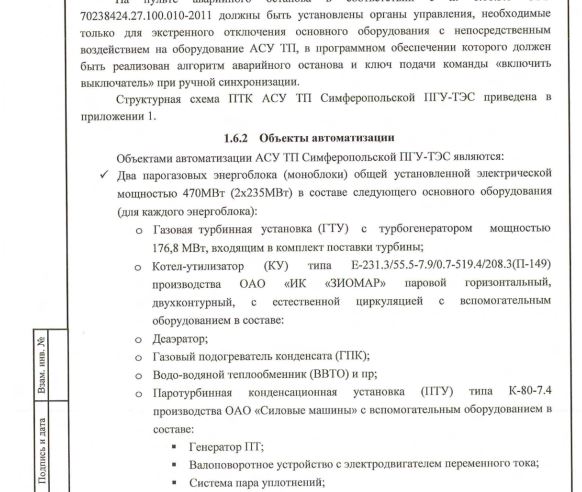
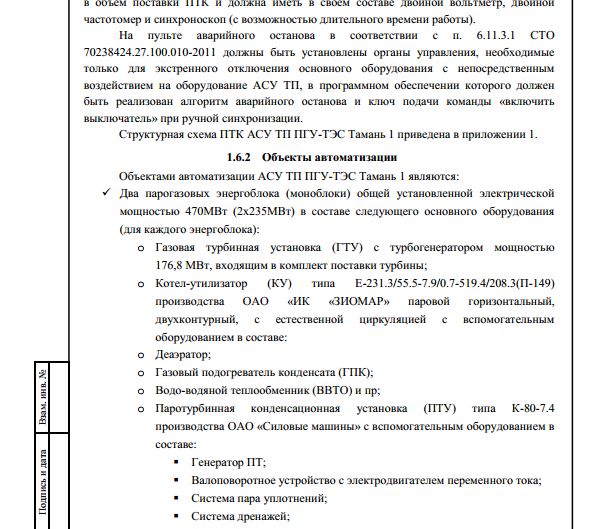
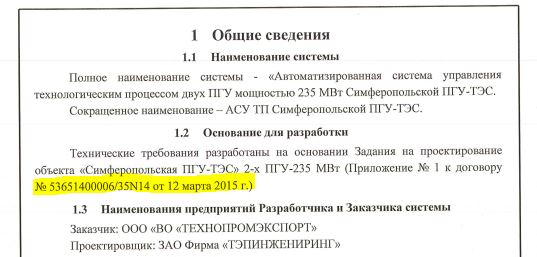
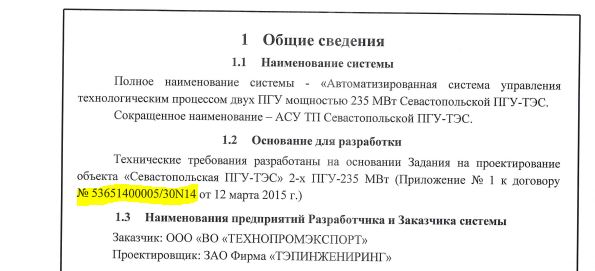

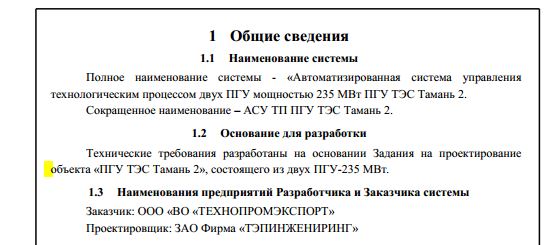
The meaning of these maneuvers
All these maneuvers, apart from confusing observers, had a goal. Here is our hypothesis about it. The likelihood of Siemens' deliberate participation in breaking sanctions is extremely high. The very fact that the contract they concluded with OAO Technopromexport was secret, skirted the required tender procedure, and only came to light thanks to the work of journalists at Vedomosti, leaves little space for Siemens' innocence. It is highly likely that an agreement between Russia and Siemens was made at the very top - the government’s plans to use specifically the Siemens turbines in Crimea were revealed even before Rostec’s daughter signed the contract with Siemens. Purely financially, this contract doesn’t make sense: for a global company like Siemens, €213 mn is a very small profit to gain from the international scandal associated with breaking sanctions. But politically, it makes perfect sense: after all, Germany is one of Russia’s main backers in the Nordstream-2 project, where Siemens could make huge profits, if it agrees with Gazprom. The turbines in Crimea were merely a small favor. The miraculous multiplication of the Technopromexport-s, sale of the turbines in between them, and the Rostec-approved bankruptcy of one of its oldest and most internationally active subsidiaries, OAO Technopromexport, was apparently part of a plan to help Siemens evade responsibility for breaking sanctions. First, Russian law does not guarantee that OAO Technopromexport’s clone would be obliged to follow the anti-Crimea clauses of the original contract with Siemens. Second, Siemensreceived an empty bankrupt shell of a company which it could present as the criminal. Now Siemens can take “decisive steps” to no longer offer gas turbine services to Russian state customers, but it has nothing to lose - it has already installed them everywhere it could. However, either Russia could not pull this off neatly, or Siemens suddenly changed its mind, and the original agreement went down the drain: Siemens didn’t deliver the magic sauce, Russia started searching for turbines in Iran, unsuccessfully, and finally dragged the turbines to Crimea anyway, while announcing they are from the unspecified “secondary market,” which is amusing since all the previous two-year attempts of Rostec to find a spare Siemens turbine just lying around somewhere in Russia were to no avail. Despite soothing assurances that Russia can’t activate the German turbines in Crimea without Germany, this is less than credible. The Soviet Union was famous for its incredible ripoffs of western technology, one of the most striking examples of which was, perhaps, the development of Soviet computers with the help of designs stolen through Soviet spies sent to IBM, and the procurement of western computers through shell companies in third-world countries and friendly Communist parties. Hacking and reverse engineering is Russia’s specialty. Siemens' recent moves to sue its contractors and plans to call off the licensing agreement with Russia, although this step should have been taken much earlier, differ starkly from the strategy we observed starting from 2014, which was likely a calculation that a scandal, if it ever happens, will blow over, even if the journalists will make a fuss, and they will get a few reprimands from Berlin. But after the European Commission said that it's up to Germany to make sure their companies comply with sanctions, and the German government didn't close their eyes, it was clear that the scandal will not blow over. After all, Germany is a country leading the EU in preserving sanctions against Russia, and this is an insult to irritate Angela Merkel personally. At the same time, Germany has spoken out against the additional sanctions proposed by the USA, and it turned out that the existing EU sanctions are far from being leak proof. Siemens is starting to suffer serious losses to its reputation. Its scenario didn't work out. Now, Siemens will pretend to the best of their ability that they are a victim of a treacherous Russian partner which hitherto had been totally trustworthy. Meanwhile, Russia will have solidified its violent annexation of Ukrainian land and ongoing attacks, sometimes deadly, against all those that disagree - with the help of reliable German technology. [hr] Written with contributions by Tobias Weihmann and Mykhailo Honchar. The original version of this document was amended to include contributions by Mykhailo Honchar, President of the Centre for Global Studies Strategy XXI (Kyiv), former Director for Energy Programmes of the Centre NOMOS (Sevastopol). Note. All currency conversions were done based on the currency rate of the date of the transaction or publicationRead also:
- Siemens’ Crimea sanctions break – a case of criminal negligence | #SiemensGate
- Two more Siemens turbines delivered to occupied Crimea by same company
- Powering the Anschluss. How Siemens turbines ended up in Crimea despite sanctions
- Siemens set to violate sanctions regime, helping build power stations in Crimea
- Siemens to help provide forbidden power to Crimea
- Russian-German nur geschäft, or strategy for bypassing sanctions


